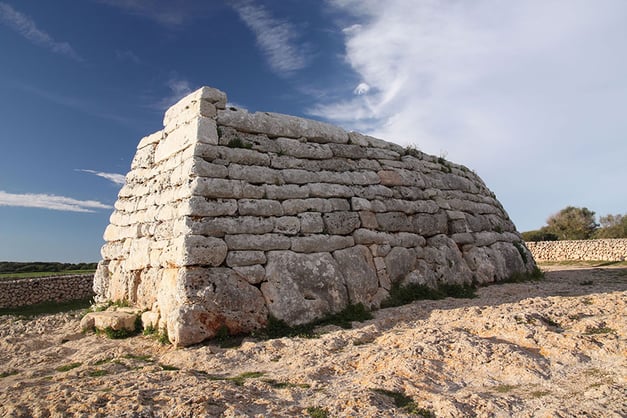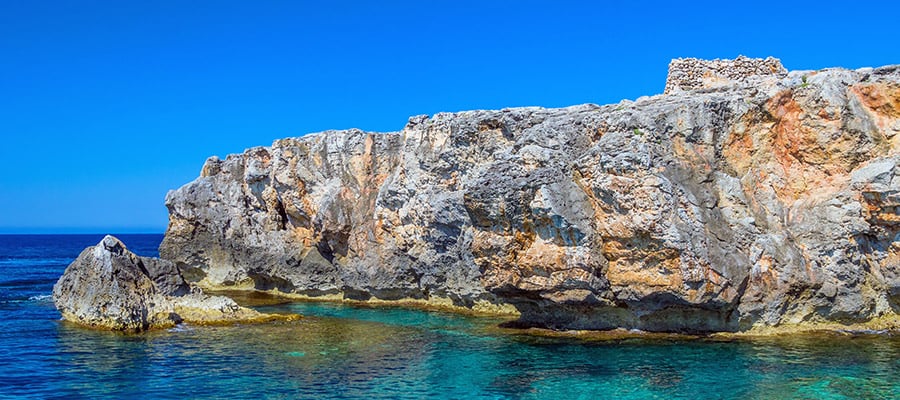Mallorca´s and Menorca´s histories are written in big rocks that hold strange monuments built more than 4.000 years ago, by the descendents of the islands´ first inhabitants. This civilization developed a culture that hasn't been found anywhere else in the world, known as Talayotic.
A magic past is evoked by the legends and the mysterious structures. This feeling is accentuated by the lack of knowledge about this civilization. Even though their legacy and work have survived almost intact until today, it's still difficult to unravel the meaning or exact intention of it.
Vestiges of this culture include talayots, taulas and navetas, all of them built in spectacular landscapes, framed by the sun and the sea. The first of the former list, the talayots, are the most symbolic and common of all three (over 500 spreaded between Mallorca and Menorca). These structures are stone towers that, apparently, had defensive purposes.
Regarding the other elements, taulas and navetas are also unique structures only found in relation to the Talayotic culture. Taulas are a combination of a large vertical rock crowned with another one on top of it in horizontal position, giving the structure a “T” shape.
Their appearance is stunning, especially seeing the large horizontal rock balancing on top of the vertical one at heights sometimes above 5 meters. Their meaning remains unknown, as well as their function, but it is believed that they had a religious origin since they have usually been found in the center of structures thought to be temples.
Meanwhile, navetas are structures built with stone blocks, forming the shape of an invert shed. In this case, it´s known that they were used for mortuary purposes, and in some of them elements like bronze bracelets, ceramic pieces and bone buttons have been found.
Menorca: 2 archaeological sites per square kilometer
Mallorca is somehow an open air museum where over 300 settlements of this culture have been found. Out of all of them, the talayot Sa Clova d´es Xot is one of the most remarkable ones, for its beauty and stunning conservation. Additionally, Capocorb Vell, Son Fornés or Ses Païses or are worth mentioning, being the latter dated in 1300BC and having been declared Historic-Artistic Monument in 1946.
Despite Mallorca´s attractive, the density of sites in Menorca make it an archaeological Paradise. The island occupies an area of 700 square kilometers and counts up to 1.574 sites. This means that there are 2 sites per square kilometer. Almost all of them are declared as Asset of Cultural Interest, with 32 of them postulating to become World Heritage Site by UNESCO.
The most emblematic monument in Menorca is the Naveta des Tudons, not only for its exceptional state of conservation but also because these constructions are only found in this specific island. It's also remarkable the visit to Torralba d´en Salord, where the island's highest taula is found (more than 5 meters high).

In addition, Torre d´en Galmés, Son Catlar –make sure to check its wonderful wall-, Talatí de Dalt and Trepucó are some of the best sites to visit in the area.
All of the talayotic constructions help us draw a mental idea of how the first settlers of Mallorca and Menorca used to live. Their traces show us a culture shared in both islands, based on ranching, agriculture and art, in the shape of wonderful stone structures.
Even after the island was invaded by the romans, byzantines, arabs, christians, pirates… the Talayotic culture survived, portraying through its structures the testimony and origins of the first Balearic inhabitants.











